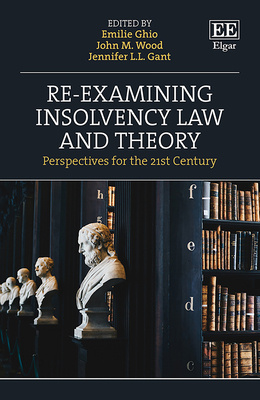A recent book, Re-examining insolvency law and theory – perspectives for the 21st century, comprises chapters on a wide range of theoretical perspectives on insolvency law – from those of morality, liberalism, tax law, human rights, competing goals and creditor rights, property rights, feminism, and the psychology of law reform.
In one chapter – A Nietzchean approach to debt and human thought, by Dr John Tribe – the author examines Nietzsche’s exploration of the relationship between debt and guilt throughout history, related to the moral obligation to keep promises – to honour debts, and the guilt arising from the dishonour of failing to keep that promise.
In that context, the chapter records various punishments meted out in history to those who were bankrupt, in various countries.
Passing over some of the unpleasant punishments of imprisonment, transportation, whipping and death, Dr Tribe refers to one of the lesser treatments of bankrupts being the wearing of conspicuous clothing or ‘distinguishing garb’.
“In Scotland, insolvents were forced to wear an outfit consisting of a yellow and brown bonnet and tights whilst sitting in the public square between 10 and 12 o’clock after adjudication of their bankruptcy. In France, insolvents were forced to wear a green hat. In Rotterdam and Leyden, debtors were not forced to wear distinguishing garments; indeed, the opposite was true. They were forced to undertake public penance in their ‘undermost garments’. The debtor would undertake this before the Town House for a proscribed period of days for one hour a day from half past eleven until half past twelve. In Spain, insolvents were made to wear an iron collar ‘one finger thick’”.
The context of this and other chapters was that throughout history, not repaying a debt or returning borrowed goods was a significant personal and societal affront calling for severe and public sanction, and humiliation. That was the case at least until more enlightened thinking and the credit economy arrived; but even now, remnants of the old thinking continue.
As one example, the Australian Constitution refers to bankruptcy and treason in the provision listing disqualifications to be a member of parliament.
The history should inform but not confine a body of law. One chapter suggests, along with others, that the term “bankruptcy” be done away with, along with its connotations of guilt and wrong-doing. It would be a start.
Those issues are discussed in other chapters including Paul Omar’s Insolvency Law and Morality – Ch 2, and David Milman’s The liberalisation of bankruptcy law – Ch 3.
See Re-examining insolvency law and theory – perspectives for the 21st century, eds Ghio, Wood and Gant, Edward Elgar Publishing, 2023.
Of the 17 chapters, Australian chapter authors are Lézelle Jacobs, Catherine Brown, Colin Anderson and Jason Harris.



